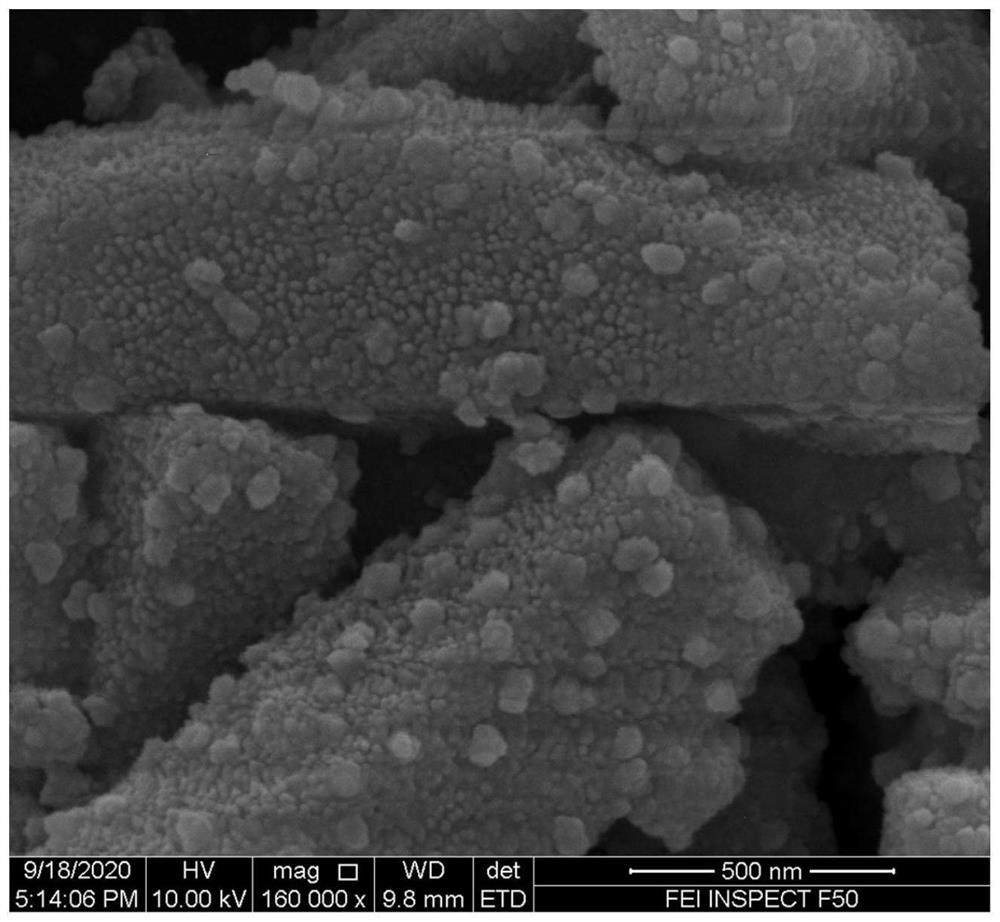Surface roughening treatment method forpotassium sulfate particle
A particle surface, potassium sulfate technology, applied in the direction of chemical instruments and methods, alkali metal sulfite/sulfite, alkali metal sulfite/sulfate preparation form, etc., can solve the problem of high process cost and large organic consumption Solvent and other problems, to achieve the effect of low process cost, low price, and prevent growth
- Summary
- Abstract
- Description
- Claims
- Application Information
AI Technical Summary
Problems solved by technology
Method used
Image
Examples
Embodiment 1
[0019] Prepare 100ml of ethylene glycol dispersion of potassium sulfate with a mass fraction of 10%, and stir; add 1ml of polyvinyl alcohol aqueous solution with a mass fraction of 1%, and stir; heat up to 80-100°C, and keep warm for 0.5-2h; Stop stirring, let it stand still or centrifuge to precipitate, and then dry the precipitate; calcinate the dried product at 500°C for 1-4 hours to obtain potassium sulfate with a rough surface.
Embodiment 2
[0021] Prepare 100ml of ethylene glycol dispersion of potassium sulfate with a mass fraction of 1%, and stir; add 1ml of polyvinyl alcohol aqueous solution with a mass fraction of 1%, and stir; heat up to 80-100°C, and keep warm for 0.5-2h; Stop stirring, and after standing or centrifuging, dry the precipitate; calcinate the dried product at 500°C for 2 hours to obtain potassium sulfate with a rough surface.
Embodiment 3
[0023] Prepare 100ml of ethylene glycol dispersion of potassium sulfate with a mass fraction of 20%, and stir; add 1ml of polyvinyl alcohol aqueous solution with a mass fraction of 1%, and stir; heat up to 80-100°C, and keep warm for 0.5-2h; Stop stirring, and after standing or centrifuging, dry the precipitate; calcinate the dried product at 500°C for 2 hours to obtain potassium sulfate with a rough surface.
PUM
 Login to View More
Login to View More Abstract
Description
Claims
Application Information
 Login to View More
Login to View More - R&D
- Intellectual Property
- Life Sciences
- Materials
- Tech Scout
- Unparalleled Data Quality
- Higher Quality Content
- 60% Fewer Hallucinations
Browse by: Latest US Patents, China's latest patents, Technical Efficacy Thesaurus, Application Domain, Technology Topic, Popular Technical Reports.
© 2025 PatSnap. All rights reserved.Legal|Privacy policy|Modern Slavery Act Transparency Statement|Sitemap|About US| Contact US: help@patsnap.com

